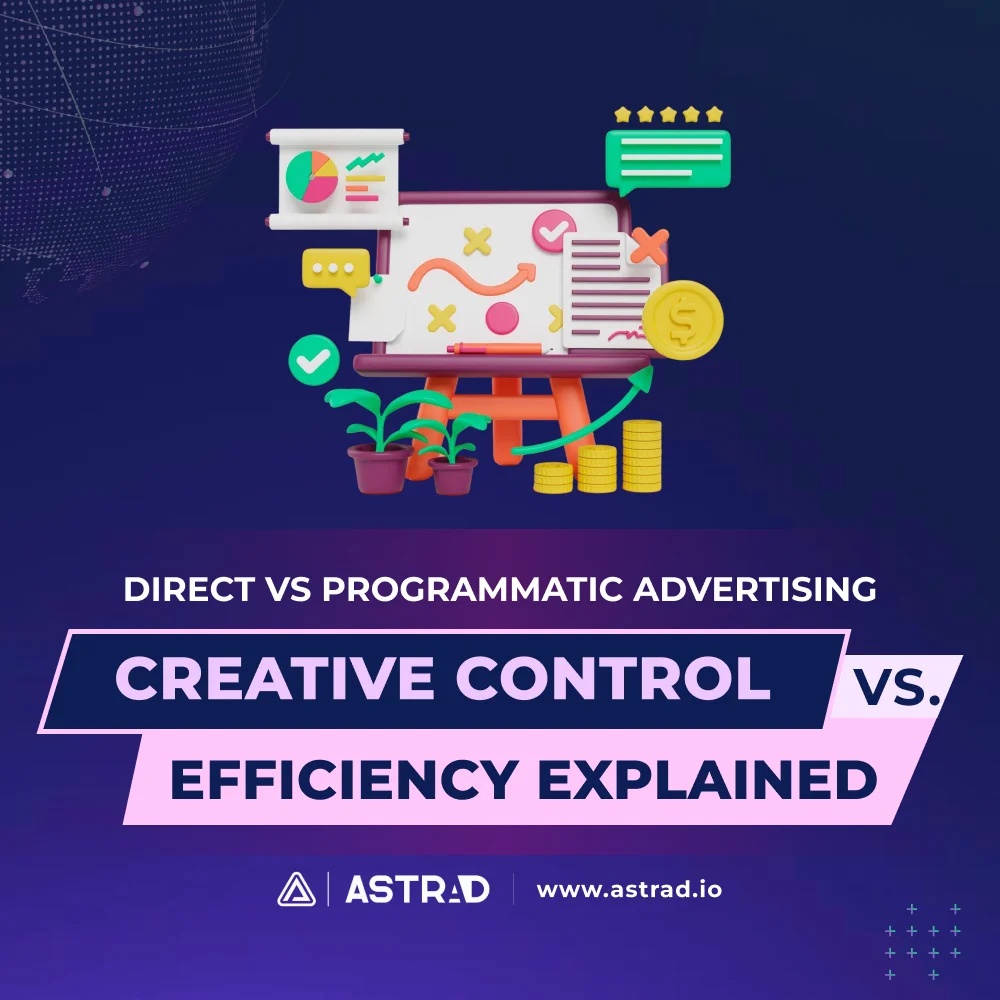Understanding the nuances of contextual vs behavioral targeting is key to crafting impactful digital ad campaigns. This examination will delve into both methods, exploring their strengths and weaknesses. By deciphering when to use each approach, marketers can strategically align their ads with user intent and content, ultimately maximizing campaign effectiveness.
Contextual and Behavioral Targeting in a Nutshell
Contextual targeting tailors ads to the content a user is currently viewing. Behavioral targeting uses past browsing habits to target users, showing them ads based on their interests, regardless of the current site.
With the abundance of overflowing information and competing messages, targeting strategies are essential for digital marketing success. By pinpointing the ideal audience, businesses can ensure their efforts aren’t wasted on broad and uninterested demographics. This focus allows for tailored messaging that resonates with specific needs and interests, leading to higher engagement and conversions and a maximized return on investment.
Which Targeting Strategy is More Effective for Specific Marketing Goals?
While both contextual and behavioral targeting offer advantages, the million-dollar question remains: Which targeting strategy reigns supreme for achieving specific marketing goals? Let’s dissect the query into bite-size answers and factors that will define said answer.
Contextual Targeting — The Good, the Bad, and the Ugly
Contextual targeting is a digital advertising strategy that places ads on websites or platforms relevant to the content a user is currently viewing. Imagine you’re reading an article about running shoes. With contextual targeting, you might see ads for specific running shoe brands or stores selling running shoes displayed alongside the article. Here’s a breakdown of its mechanics, advantages, and limitations:
How it Works
- Analyzing Content: Algorithms analyze keywords, topics, and overall themes of a webpage to understand its content.
- Matching Ads: The advertiser selects keywords or themes that align with their target audience and ideal ad placement.
- Ad Delivery: The ad platform matches the advertiser’s selections with relevant web pages, displaying the ad to users consuming that content.
Advantagеs
- Relevance: Ads are highly relevant to the user’s current interest, leading to better engagement and click-through rates.
- Brand Suitability: Advertisers can avoid placing ads on inappropriate content, protecting brand image.
- Privacy-Friendly: Doesn’t rely on personal user data, making it a more privacy-conscious approach.
Limitations
- Less Granular Targeting: Reaches a broader audience interested in a specific topic but may not pinpoint specific user demographics.
- Limited Reach: Users who haven’t explicitly shown interest in the targeted content may be missed.
- Reliance on Quality Content Analysis: Accuracy depends on the effectiveness of the platform’s content analysis tools.
Behavioral Targeting — The Skinny
Behavioral targeting takes aim at users’ past online behavior to deliver highly personalized advertisements. Let’s delve into its inner workings, strengths, and weaknesses.
How it Works
- Data Collection: Tracks user behavior across websites using cookies, browsing history, and past purchases.
- Building User Profiles: This data is used to create user profiles that categorize individuals based on interests, demographics, and online activities.
- Targeted Ad Delivery: Ads are then displayed to users based on their profiles, maximizing the chance of reaching those most likely to be interested.
Advantagеs
- Hyper-Personalization: Delivers highly relevant ads based on individual interest and past behavior, leading to increased engagement and conversions.
- Improved Relevancy: Reaches users who are actively researching or considering similar products or services.
- Retargeting Power: Allows for retargeting campaigns, reminding users of products they’ve previously shown interest in.
Limitations
- Privacy Concerns: Collecting user data can raise privacy concerns, requiring transparency and user consent.
- Cookie Dependence: Reliance on cookies for data collection can be affected by privacy settings and ad blockers.
- Potential for Irrelevant Ads: Overly broad user profiles or outdated data can lead to irrelevant ad delivery.
Contextual Targeting vs Behavioral Targeting
Choosing the right targeting strategy hinges on understanding the key differences between contextual and behavioral targeting. Here’s a breakdown of the main differences between contextual and behavioral targeting:
Data Collection and Privacy
- Contextual: Relies on analyzing website content, not user data, making it more privacy-friendly.
- Behavioral: Tracks user behavior through cookies and other methods, raising privacy concerns and requiring user consent compliance.
Relevance and Personalization
- Contextual: Delivers ads relevant to the current content, offering moderate personalization based on user interest in the topic.
- Behavioral: Highly personalized with ads tailored to individual user profiles based on past behavior and interests.
Accuracy and Precision
- Contextual: Generally lower cost due to simpler implementation, but ROI can be lower due to broader targeting.
- Behavioral: This can be more expensive due to data acquisition and management, but ROI can be higher with highly relevant ads.
Cost and ROI
- Contеxtual: Gеnеrally lowеr cost duе to simplеr implеmеntation, but ROI can bе lowеr duе to broadеr targеting.
- Bеhavioral: Can bе morе еxpеnsivе duе to data acquisition and managеmеnt, but ROI can bе highеr with highly rеlеvant ads.
Impact of Regulations
- Contextual: Less affected by privacy regulations as it doesn’t rely heavily on user data.
- Behavioral: More susceptible to regulations like GDPR and CCPA that restrict data collection and usage.
Implementation and Maintenance
- Contextual: Relatively simple to implement with minimal ongoing maintenance.
- Behavioral: Requires setting up data collection methods and managing user profiles, leading to higher maintenance needs.
Industry and Content Suitability
- Contextual: Works well for industries with contextually relevant content – e.g., sports news and sports equipment ads.
- Behavioral: More effective for industries with complex buying journeys or where user intent is not readily apparent from content alone – e.g., e-commerce.
Deciding Where to Hedge Your Bets
Our exploration reveals both contextual and behavioral targeting hold distinct strengths. Contextual targeting offers a privacy-focused approach with relevant ads based on current content, while behavioral targeting boasts hyper-personalization with the potential for higher conversions. The optimal choice lies in your goals. For brand awareness or reaching new audiences, contextual targeting shines. For retargeting or reaching users deep in the buying funnel, behavioral targeting excels.
However, the best results might lie in integration. Consider using contextual targeting as a base layer to ensure initial relevance, then layer on behavioral insights for even more targeted messaging. Ultimately, the key to success lies in evaluating your campaign goals and audience needs. Take a critical look at your current targeting strategy and explore how these methods can elevate your digital advertising efforts.






